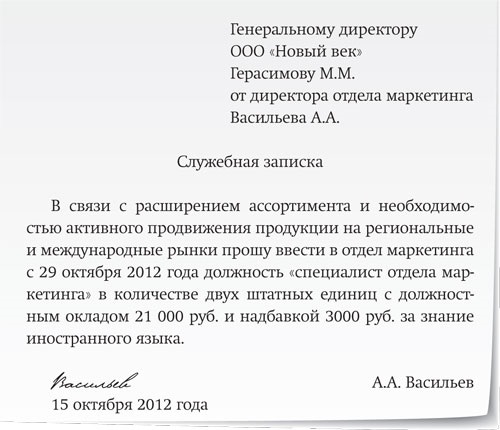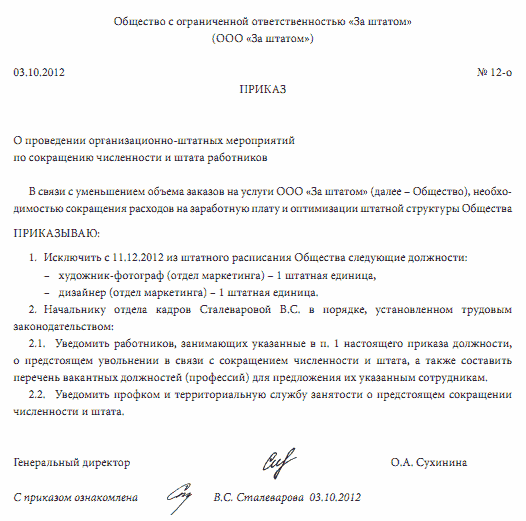FIDH-HRC ″Viasna″ – Death Penalty in Belarus: Murder on (Un)Lawful Grounds 5 Political Context The Republic of Belarus is a country in the center of Europe with an area of 207.6 thousand km2 and a population of about 9.498 million people. A[h] ki_pbnbqghklb mkem]Z b gZqbgZ ijm`Z Z aZrlbl_, h^ h _gh h^b fZlbqgm d b]m ^_p_ gZ ihjh^bqghf kf_rlZ m b fZlbqgm d b]m ojZgbl_ kdbo ihjh^bpZ.
The team at Nile are heavily involved and supportive of the service design community, both through local activities and the Service Design Network (), and this video was created for everyone in the community to share and use. It details some great work from service design companies working in the UK and abroad, and aims to help to communicate the value of a service design approach to business audiences.
 We would like to thank the very bright and talented Re.Design masters students from Duncan of Jordanstone College of Art & Design who produced this short video. Find out more about this program here: Please feel free to share and use, this is for the whole community.
We would like to thank the very bright and talented Re.Design masters students from Duncan of Jordanstone College of Art & Design who produced this short video. Find out more about this program here: Please feel free to share and use, this is for the whole community.
In 1909, Berlin theology professor Adolf Harnack issued an appeal to Kaiser Wilhelm II. As a close adviser to the Kaiser, a member of the Academy of Sciences and director of the renowned Royal Library, Harnack was one of the most innovative and influential science managers of his time. Noti dlya bayana iz filjma bumer. His memorandum outlined a comprehensive reform of the science system. It centred on Harnack’s call for Germany to establish independent research institutes to co-exist alongside the universities. He proposed that they should conduct specialized basic research, predominantly in the natural sciences, and explained that the rapid pace of industrialization since the mid-19th century had demonstrated that many new technical problems could only be solved with greater knowledge of chemical or physical principles.
Advances were also being made in the fields of biology and medicine, he wrote. Harnack’s memorandum paved the way for structures that still characterize the German science system to this day and facilitated specialized research and Big Science as we know them today.


In the interests of implementing these structures, Harnack proposed the foundation of a brand new type of research association for the advancement of science: The Kaiser Wilhelm Society. Advancement of Science took place at the Berlin Academy of Arts on 11 January 1911. A total of 83 voting members of the new association attended the meeting. The list of founding members reads like an extract from the “Who’s Who” of German industry. The Kaiser had announced its foundation a few months prior, on Berlin University’s 100th anniversary.
The new Society was to complement the work of the universities and academies with research into the natural sciences and thereby keep Germany competitive in the international arena. Influential science manager and scientist Adolf Harnack was appointed President.
The Kaiser himself was the patron, thus granting the new institution a great deal of prestige and attracting numerous powerful donors, including many members of the Jewish middle classes. Minerva was chosen as the Society’s symbol, the Roman goddess of science being the embodiment of wisdom, valour and endurance. The first of the KWS’s institutes were able to move into their own purpose-built accommodation in October 1912. The Institute for Chemistry with Director Ernst Beckmann and the Institute of Physical Chemistry and Electrochemistry with Director Fritz Haber were both inaugurated in Berlin. They formed the core of the new research campus at Dahlem, which went on to grow rapidly: the Kaiser Wilhelm Institute for Experimental Therapy was opened as early as 1913, followed by the Institute for Biology in 1915. But the KWS was also active beyond the capital: In 1912, Jewish art collector Henriette Hertz bequeathed the KWS the Palazzo Zuccari in Rome, along with a significant library of books on the history of art and a substantial sum in the form of endowment capital.
 We would like to thank the very bright and talented Re.Design masters students from Duncan of Jordanstone College of Art & Design who produced this short video. Find out more about this program here: Please feel free to share and use, this is for the whole community.
We would like to thank the very bright and talented Re.Design masters students from Duncan of Jordanstone College of Art & Design who produced this short video. Find out more about this program here: Please feel free to share and use, this is for the whole community.
In 1909, Berlin theology professor Adolf Harnack issued an appeal to Kaiser Wilhelm II. As a close adviser to the Kaiser, a member of the Academy of Sciences and director of the renowned Royal Library, Harnack was one of the most innovative and influential science managers of his time. Noti dlya bayana iz filjma bumer. His memorandum outlined a comprehensive reform of the science system. It centred on Harnack’s call for Germany to establish independent research institutes to co-exist alongside the universities. He proposed that they should conduct specialized basic research, predominantly in the natural sciences, and explained that the rapid pace of industrialization since the mid-19th century had demonstrated that many new technical problems could only be solved with greater knowledge of chemical or physical principles.
Advances were also being made in the fields of biology and medicine, he wrote. Harnack’s memorandum paved the way for structures that still characterize the German science system to this day and facilitated specialized research and Big Science as we know them today.


In the interests of implementing these structures, Harnack proposed the foundation of a brand new type of research association for the advancement of science: The Kaiser Wilhelm Society. Advancement of Science took place at the Berlin Academy of Arts on 11 January 1911. A total of 83 voting members of the new association attended the meeting. The list of founding members reads like an extract from the “Who’s Who” of German industry. The Kaiser had announced its foundation a few months prior, on Berlin University’s 100th anniversary.
The new Society was to complement the work of the universities and academies with research into the natural sciences and thereby keep Germany competitive in the international arena. Influential science manager and scientist Adolf Harnack was appointed President.
The Kaiser himself was the patron, thus granting the new institution a great deal of prestige and attracting numerous powerful donors, including many members of the Jewish middle classes. Minerva was chosen as the Society’s symbol, the Roman goddess of science being the embodiment of wisdom, valour and endurance. The first of the KWS’s institutes were able to move into their own purpose-built accommodation in October 1912. The Institute for Chemistry with Director Ernst Beckmann and the Institute of Physical Chemistry and Electrochemistry with Director Fritz Haber were both inaugurated in Berlin. They formed the core of the new research campus at Dahlem, which went on to grow rapidly: the Kaiser Wilhelm Institute for Experimental Therapy was opened as early as 1913, followed by the Institute for Biology in 1915. But the KWS was also active beyond the capital: In 1912, Jewish art collector Henriette Hertz bequeathed the KWS the Palazzo Zuccari in Rome, along with a significant library of books on the history of art and a substantial sum in the form of endowment capital.
...">Obosnovanie Otkritiya Novoj Shtatnoj Edinici(22.01.2019) We would like to thank the very bright and talented Re.Design masters students from Duncan of Jordanstone College of Art & Design who produced this short video. Find out more about this program here: Please feel free to share and use, this is for the whole community.
We would like to thank the very bright and talented Re.Design masters students from Duncan of Jordanstone College of Art & Design who produced this short video. Find out more about this program here: Please feel free to share and use, this is for the whole community.
In 1909, Berlin theology professor Adolf Harnack issued an appeal to Kaiser Wilhelm II. As a close adviser to the Kaiser, a member of the Academy of Sciences and director of the renowned Royal Library, Harnack was one of the most innovative and influential science managers of his time. Noti dlya bayana iz filjma bumer. His memorandum outlined a comprehensive reform of the science system. It centred on Harnack’s call for Germany to establish independent research institutes to co-exist alongside the universities. He proposed that they should conduct specialized basic research, predominantly in the natural sciences, and explained that the rapid pace of industrialization since the mid-19th century had demonstrated that many new technical problems could only be solved with greater knowledge of chemical or physical principles.
Advances were also being made in the fields of biology and medicine, he wrote. Harnack’s memorandum paved the way for structures that still characterize the German science system to this day and facilitated specialized research and Big Science as we know them today.


In the interests of implementing these structures, Harnack proposed the foundation of a brand new type of research association for the advancement of science: The Kaiser Wilhelm Society. Advancement of Science took place at the Berlin Academy of Arts on 11 January 1911. A total of 83 voting members of the new association attended the meeting. The list of founding members reads like an extract from the “Who’s Who” of German industry. The Kaiser had announced its foundation a few months prior, on Berlin University’s 100th anniversary.
The new Society was to complement the work of the universities and academies with research into the natural sciences and thereby keep Germany competitive in the international arena. Influential science manager and scientist Adolf Harnack was appointed President.
The Kaiser himself was the patron, thus granting the new institution a great deal of prestige and attracting numerous powerful donors, including many members of the Jewish middle classes. Minerva was chosen as the Society’s symbol, the Roman goddess of science being the embodiment of wisdom, valour and endurance. The first of the KWS’s institutes were able to move into their own purpose-built accommodation in October 1912. The Institute for Chemistry with Director Ernst Beckmann and the Institute of Physical Chemistry and Electrochemistry with Director Fritz Haber were both inaugurated in Berlin. They formed the core of the new research campus at Dahlem, which went on to grow rapidly: the Kaiser Wilhelm Institute for Experimental Therapy was opened as early as 1913, followed by the Institute for Biology in 1915. But the KWS was also active beyond the capital: In 1912, Jewish art collector Henriette Hertz bequeathed the KWS the Palazzo Zuccari in Rome, along with a significant library of books on the history of art and a substantial sum in the form of endowment capital.
...">Obosnovanie Otkritiya Novoj Shtatnoj Edinici(22.01.2019)